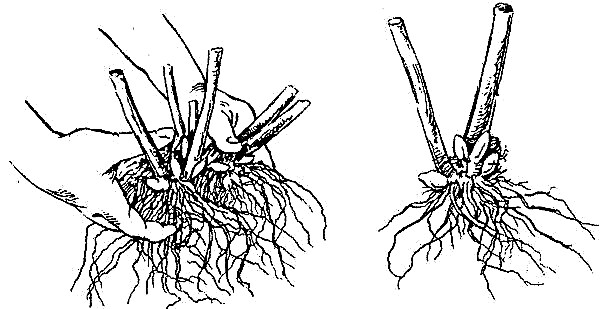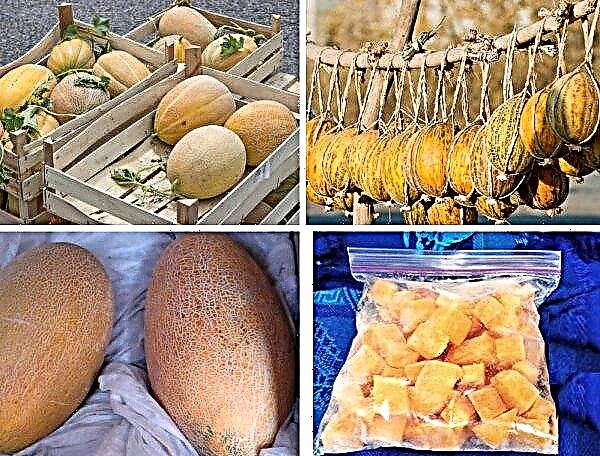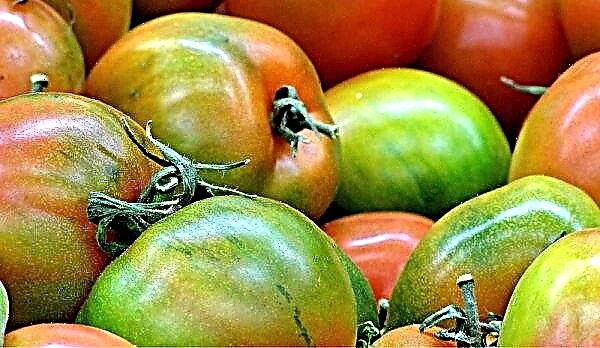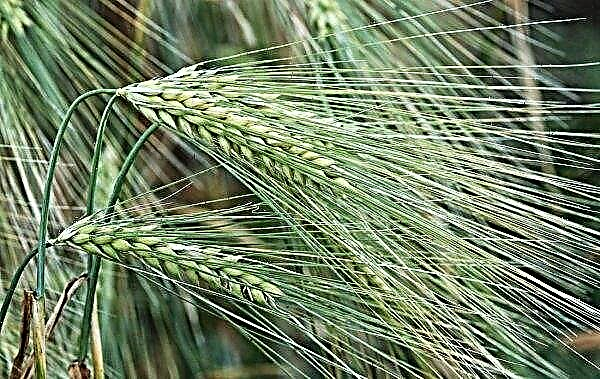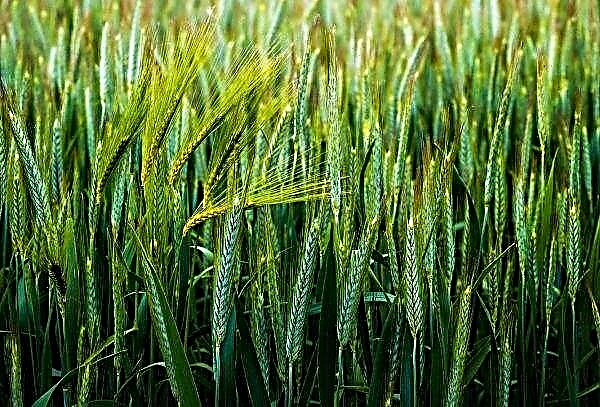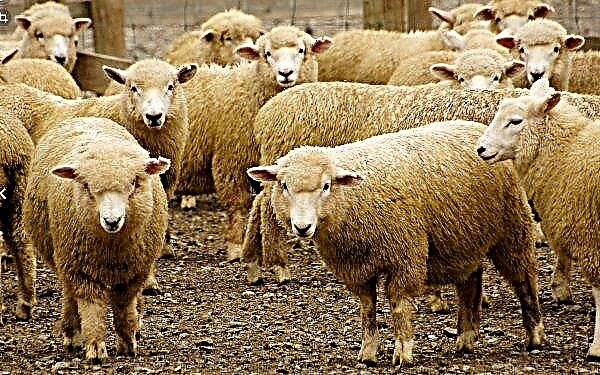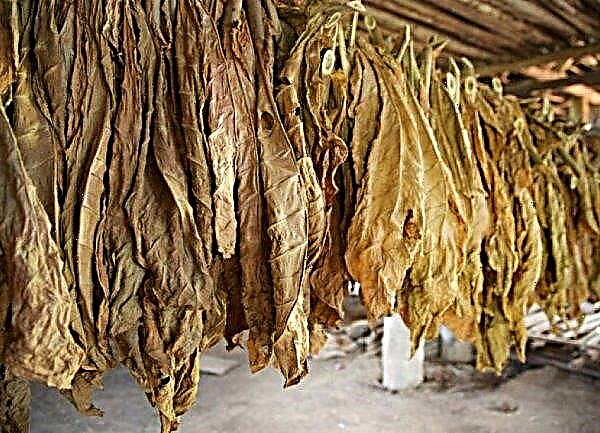Beijing cabbage, thanks to the ease of cultivation and high productivity, quickly won the sympathy of many gardeners. Yes, and the taste, combined with a rich vitamin reserve, leave no one indifferent. In this light, the desire to enjoy this crispy vegetable in winter does not look strange. How to save the harvest of Beijing cabbage for the winter, read on.
Choosing the best varieties for winter storage
This point should be foreseen even at the stage of planting Peking in spring, since the fruits of a vegetable, depending on the variety variety and the ripening period, are distinguished by different stubbornness. So, everyone’s favorite juicy and tender early ripe hybrids are not suitable for winter storage at home - they quickly deteriorate (lose moisture, taste, fade and rot).
Important! When choosing a variety of Beijing cabbage for storage, give preference to domestic hybrid varieties, since as a result of their selection, the conditions of the growing environment were taken into account.
Early ripe hybrid varieties of Chinese vegetables are most often planted for salads, soups, mashed potatoes in the summer. In fresh form, such fruits lie for no more than a week. The only way to preserve them for the winter is conservation (various salads and mixed vegetables).
Due to such features, these varieties are rarely used on an industrial scale. Gardeners plant on their sites a small number of such plants. Experienced vegetable growers are advised to select the best fruits of mid-ripening and late-ripening varieties (ideally - late-ripening) for storage.

These include:
- Turquoise
- Market
- Mojito;
- Nick
- Orange heart;
- Wizard;
- Sparrow;
- Russian size;
- Wineglass;
- Half-finished;
- Asten
- Nozaki.
The shelf life of these varieties with the right approach lasts 3-4 months. The shelf life of mid-season varietal varieties is slightly less - up to 3 months. Such species include Spring Beauty, Hydra, Grenade, Janine, Princess, Kyustar, Tenderness, Kiseki, Miss China, Filippok, Modern, Richie and others.
Preparation of Beijing cabbage for storage
The duration of the Beijing storage time depends on the correct preparation of the vegetable.

To do this, remember some rules:
- Timely harvesting vegetables from the garden. Vegetable growers recommend collecting fruits, intended for further storage immediately before the onset of the first frost. But, at the same time, they should not be allowed to freeze: this will reduce the quality of Beijing and reduce the term of preservation.
- It is important that the cabbage heads are dry during the harvest: it is worth the wait when the morning dew or raindrops dry. Many housewives ask if cabbage should be washed before being sent for storage. Definitely not: the vegetable must be dry.
- If the cabbage leaves are contaminated with soil residues, then they should be thoroughly cleaned so as not to provoke damage to the fruit.
- For bookmarking, you can choose only healthy and undamaged fruits, on which there are no traces of insects, rot or mold. If damage is found only on the upper leaves of the heads, then they can be torn off, but the main thing is not to overdo it: too “undressed” heads will dry quickly.
- Preference should be given to large and dense heads of cabbage, but not overgrown.
Did you know? Beijing is one of the most common cabbage varieties in the world.
Storage conditions
In addition to taking into account all of the above rules, it is also necessary to provide the Chinese vegetable with proper storage conditions, namely:
- Heads of cabbage should be in a room with high humidity, but it is worthwhile to make sure that condensation does not form on them. The optimum moisture indicator is 95%, and not lower, the ideal is 98%.
- How much Beijing cabbage will be stored in an apartment, cellar, or basement depends on the air temperature. Heads of cabbage will feel great at a temperature of 0 ... + 2ºС. In apartment conditions, they are best placed either in the refrigerator or on a glazed loggia, the temperature at which does not drop below 0ºС.
- Regardless of the place of storage (refrigerator, cellar, loggia, basement), heads of cabbage must be tightly wrapped in cling film (separately) and inspected every two weeks to remove wilted or decayed leaves.

The main methods of preserving Beijing cabbage
A gardener who has gathered a high Beijing crop must have information on how to store it. So, Chinese cabbage can be saved both fresh and frozen, or dried. Read more about each method.
In fridge
This is one of the most common and popular methods among gardeners who do not have a cellar. The heads of cabbage selected for savings are wrapped with cling film or plastic bags and placed in a refrigerated vegetable compartment.
If this is not the case, then you can purchase a plastic container that closes on the lid, put the fruits in it and place it in the refrigerator. This way of saving will allow you to feast on salads with fresh Peking for one month.
Did you know? In ancient Greece, cabbage was considered a symbol of sobriety, able to relieve symptoms of intoxication.
In the cellar
If there is no place in the refrigerator, then you can save fresh cabbage heads in a kind of vegetable storehouse - a cellar.

There are several options for storing vegetables in the cellar:
- In the box. Heads wrapped in plastic or polyethylene need to be loosely folded into a drawer in a standing position. Lying on the side is not recommended.
- In sand. This method is relevant for cabbage heads that have previously been torn out by the roots. Wet sand is collected in a special container or box, vegetables are placed there, and the root system is sprinkled a little. It turns out a peculiar plot on which the heads of cabbage will neither sprout, nor wither, nor grow old.
- In limbo. The method is less popular than the previous ones. It comes down to hanging heads (up with stitches) on a rope stretched under the ceiling in the cellar. The rationality of this method, each vegetable grower determines individually.
Important! Make sure that there are no fruits next to cabbage, especially apples, that produce ethylene, which damages Beijing.
Subject to the rules and ensuring storage conditions (humidity, air temperature), the fruits will retain freshness for 3-4 months, that is, until the New Year and even longer.
In dried form
Dried Peking is ideal for preparing soups and mashed vegetables in winter.

To implement the process, use an oven or an electric dryer, and it consists of the following steps:
- Thin cabbage foliage. First you need to remove all damaged foliage.
- Decomposition of chopped vegetables in an oven or electric dryer in a thin layer.
- Setting the correct temperature mode: for the oven - + 50 ... + 100ºС (in this case it is necessary to turn on the convection mode, or not close the oven doors), for the electric dryer - + 50 ... + 60ºС.
- Regularly stir chopped pieces of vegetable.
With the proper organization of the process, you will receive dried cabbage from the oven after 3-4 hours, and from the electric dryer - after 5 hours.Important! It is recommended to store dried Beijing in cotton bags (for example, the vegetable will breathe, but will not become damp) and in a dry place for a whole year, or even longer.
Leaven
The fermentation process of Beijing cabbage is slightly different from ordinary. This is due to the fact that the foliage of a Chinese vegetable is much more tender.

To implement the most common recipe you will need:
- 5 kg Peking;
- 300 ml of water;
- 50 ml of vinegar;
- 1 tsp vinegar
- 1 teaspoon salt;
- 1 garlic clove.
The Chinese vegetable must be chopped and mixed well with the rest of the ingredients, placed in a fermentation container and well packed. Then the container is covered with a lid and a load is placed on it. Salting must be kept for two days in room conditions, and then transferred to a cold room, where it should be ready for 14 days.
Freezing
Another option for saving Beijing in the winter is freezing. In this way, the vegetable is stored mainly for the preparation of soups or cabbage rolls. If Beijing cabbage is intended for salad use, then it is frozen in a crushed (chopped) form.
Leaves, intended for the preparation of cabbage rolls, are stored in their entirety. Before being sent to the freezer, the foliage is placed in plastic bags or containers. Shelf life of frozen Beijing is 1 year.Important! Defrosting the leaves of a Chinese vegetable is necessary in a natural way, without blanching, since the foliage is very delicate, and can boil apart.
Useful Tips
Anyone who decides to tackle Beijing storage for the winter should familiarize themselves with some recommendations from experienced gardeners:
- Often, during storage of heads of cabbage, condensation forms under the film. To avoid this phenomenon, the fruits must be cooled before wrapping in cellophane.
- Do not allow the temperature to rise in the room where the vegetable is stored. This will lead to its germination.
- If you are saving fruits in the cellar, you can do a little testing: put them on different shelves with different heights. So, it will be possible to determine the ideal place to store head for the next year.
- Watch out for humidity. If the indicator rises above 98%, Peking can suffer from fungal diseases, or rot.
- It is not necessary to wrap cabbage intended for saving in the refrigerator with cellophane: you can use paper bags or a newspaper as a wrapper.
- It is not recommended to pick off the amount of foliage necessary for preparing the conceived dish from the head, then wrap it again and send it for saving. This will damage the cabbage. If you have already started using the vegetable, then use it whole.

As you can see, subject to some simple rules, you can provide yourself with fresh Peking cabbage from your own garden for a long time, and enjoy dishes from this vegetable in the winter. The main thing is to take into account all the nuances of Peking savings, choose your own storage method, and provide the vegetables with optimal conditions.


